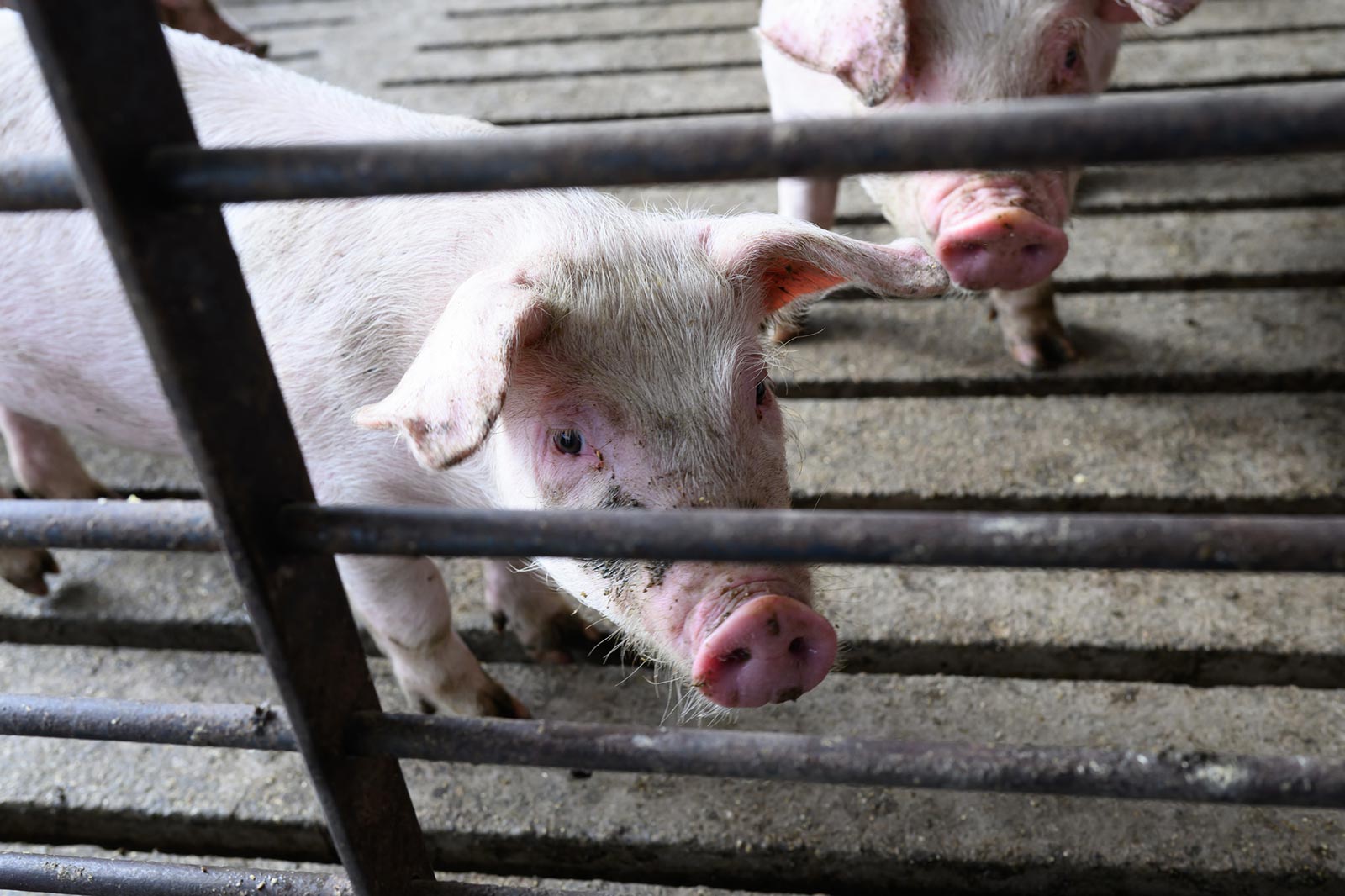Two-hundred and forty pigs (PIC 337 x 1050, Genus, Hendersonville, TN); 27.62 ± 4.54 kg) were utilized to evaluate growth performance on growing pigs fed varying levels of soybean meal (SBM) diets. In a complete randomized design, pigs were randomly assigned to one of four dietary treatments (n = 15 pens/treatment; 4 pigs/pen). Dietary treatments consisted of: 1) low SBM (LSBM) corn-soy diet supplemented with crystalline amino acids , 2) medium SBM diet (MSBM) corn-soy diet with moderate crystalline amino acid inclusion, 3)Enhanced soybean meal diet (ESBM) with SBM formulated to replace all synthetic lysine equal to BCP in SID lysine , and 4) Elevated soybean meal (ESBM+) contained excess levels SBM to replace additional crystalline amino acids. The study was divided into three phases with SBM inclusion ranging from approximately 20-50%, 15-45%, and 10-40%. The dietary phases were fed from days 0-27, 28-55, and 56-84. Treatments 1-3 were formulated to the same SID Lys:ME for the three dietary phases (3.50, 3.08 and 2.57, respectively; however, in the ESBM+, the SID Lys:ME ratio was elevated (4.27, 3.87 and 3.44). Additionally, diets within each phase were isocaloric. Diets were formulated to meet or exceed all other nutrient recommendations (NRC, 2012). Pig body weight (BW) and feed disappearance were recorded at phase changes to calculate average daily gain (ADG), average daily feed intake (ADFI), and feed efficiency (G:F). Data were analyzed using Proc GLIMMIX in SAS 9.4 (Inst., Cary, NC) with pen as the experimental unit and the model included the fixed effect of treatment and dietary phase with least squares means reported. Results were considered significant at P ≤ 0.05 and a tendency at 0.05 < P ≤ 0.10. Overall, (d 0-84) pig ADFI or ADG did not differ across treatments (P ≥ 0.522). Ending body weight was not different across dietary treatments (BW = 106.07 ± 10.84 kg; P = 0.7336). However, GF was improved in pigs fed LSBM diets compared to ESBM+ (0.41 vs. 0.44; P < 0.05). No significant interaction between treatment and phase was observed in BW, ADFI or ADG (P > 0.1). A significant interaction between dietary treatment and phase was detected in GF (P = 0.0016), indicating that the effect of dietary treatment on GF depended on the phase. There were no differences across treatments in phase 2. There was an improvement in GF in pigs fed LSBM compared to ESBM in phase 1 (0.50 vs. 0.54; P = 0.038) and LSBM was improved in phase 3 compared to ESBM+ (0.35 vs. 0.39; P = 0.02). In conclusion, there were no negative growth performance effects of feeding diets containing minimal crystalline amino acids and meeting the requirement of the pigs via soybean meal.
Wilerman, C., S. Craig, S. Trabue and L. Greiner. 2025. Evaluation of the growth performance on growing pigs fed varying levels of soybean meal diets. 2025 American Society of Animal Science Midwest Section meeting, Abstract 95.
